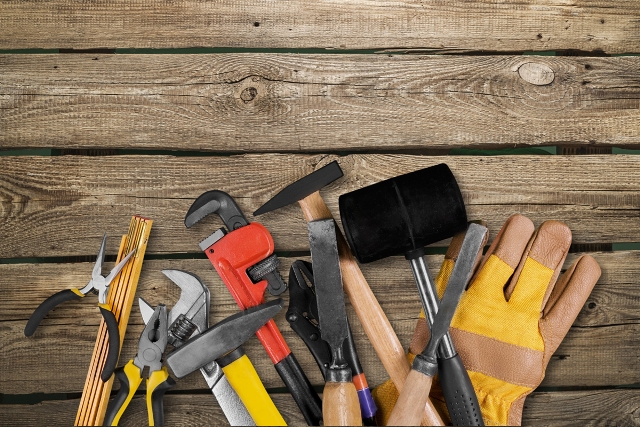If you’re someone who loves to take on projects head-on rather than leave it up to someone else, or perhaps you’re trying to build something yourself for the first time, we’re going to give you a few tips to follow for your next DIY project. These general safety and convenience tips will do you a world of good, and severely cut down time on research and injury.
Do a preliminary check on your power tools
We know you’re probably foaming at the mouth to get that new kitchenette installed, or create the perfect book cabinet for your den, but before you dive into those projects, make sure you have all the tools you need close in hand, before you begin. You should also check to see that your power tools are all fully functional, so nothing is impacting their performance or your handling of them. If you’re new to DIY projects, you may also want to consider borrowing power tools if you’re on a budget. If you are indeed borrowing, check for anything like frayed cabling, or even cracked and broken casing. Don’t use a damaged product, ever, simply because it isn’t the safe and responsible thing to do. If your own tools seem to be in a state of disrepair, either find replacement components or in more serious cases, repaired by a technician.
Always have a first-aid kit around

This may seem overzealous, but first-aid kits are not only for more severe injuries, but for the more simple issues like bumps, cuts, or scrapes. Dealing with these little wounds sooner rather than later is most hygienic and best for your health. You don’t want debris getting into your open wounds. Make sure your first-aid kit is not only close, but can be opened quickly and is well-stocked with relevant equipment.
Know your ladder placement rules
If you’re going to be working with something that requires a ladder, especially a long one, remember that for every four feet of ladder height required, the bottom of the ladder should be one foot away from the object it is leaning against for maximum stability. Essentially, for every four feet you intend to climb, move the base of the ladder a foot away from the wall. If you are going 8 feet up, for example, the ladder should be 2 feet away at the base. If you’re not accustomed to using ladders, you may not realize it, but it can be dangerous to have an improperly angled and imbalanced ladder, for obvious reasons.
Always use the right equipment.

First and foremost, if you’re new to DIY projects, you should avoid wearing regular clothing. So, ideally, take off any watches, bracelets, and loose-hanging clothing. These types of clothes and accessories can get caught in power tools, or just overall be in the way or a hazard when you aren’t using power tools but require full concentration and balance. You don’t want to be worrying about how your sleeve may rip or watch may get scratched. On top of this, you should wear safety accessories, like safety glasses, earplugs, and safety shoes. The glasses will help ensure nothing gets into your eyes, protecting you from debris, the earplugs will minimize damage from loud tools, and the safety shoes will make sure that you are protected. If you find yourself working in muddy, wet, or slippery conditions, these safety shoes will more than likely also have high traction soles, on top of the durability you need to make sure nothing hurts your feet, like falling objects.
Follow instructions
This might seem obvious, but if you’re dealing with an appliance like power tools or building something out of a catalog, you need to use and build these things in accordance with the manufacturer’s instructions and heed any warnings (especially when it comes to the power tools). Also, a serious rule of thumb, which may not be mentioned in all power tool manuals, before plugging it in, make sure it is off.

You do not want to be startled or surprised when the powertool you’re holding starts to come to live as you plug it in.
We hope these few safety tips have helped you, and while for some of you veterans reading, these are mostly obvious, these tips are all absolutely necessary and valuable for those of you who are new to DIY projects. Hopefully you did indeed learn a trick or two, regardless of your ability and skill level, and remember than above all else, stay safe and enjoy your projects!






